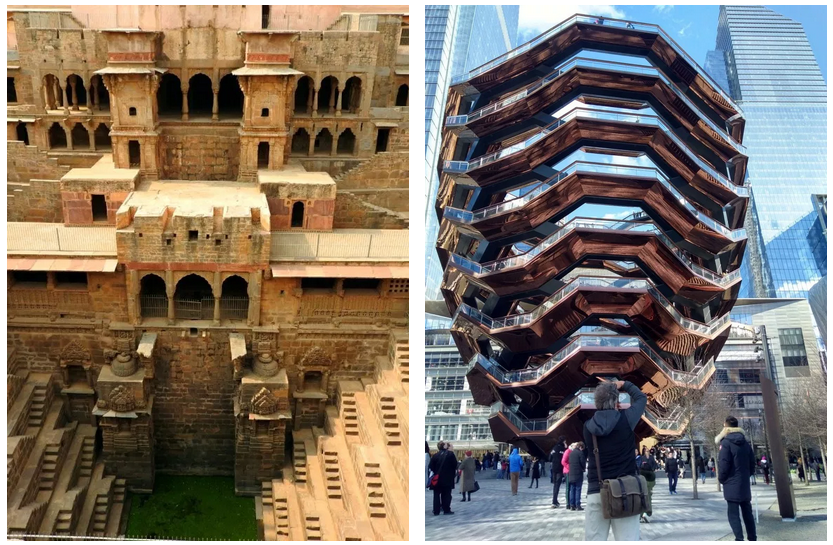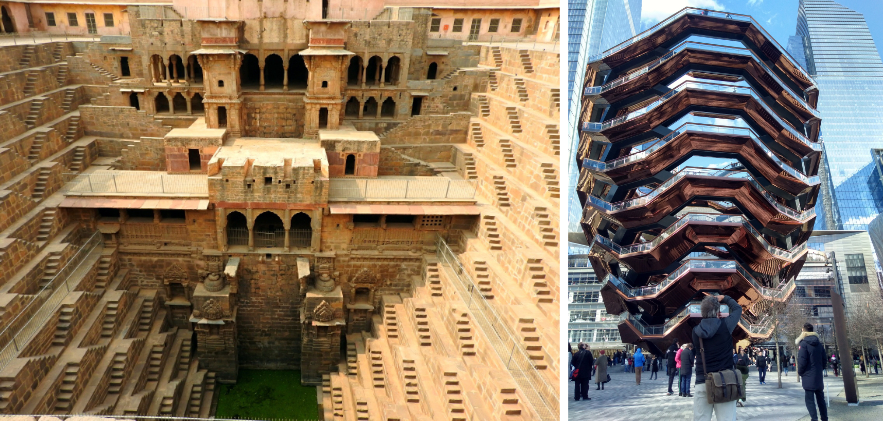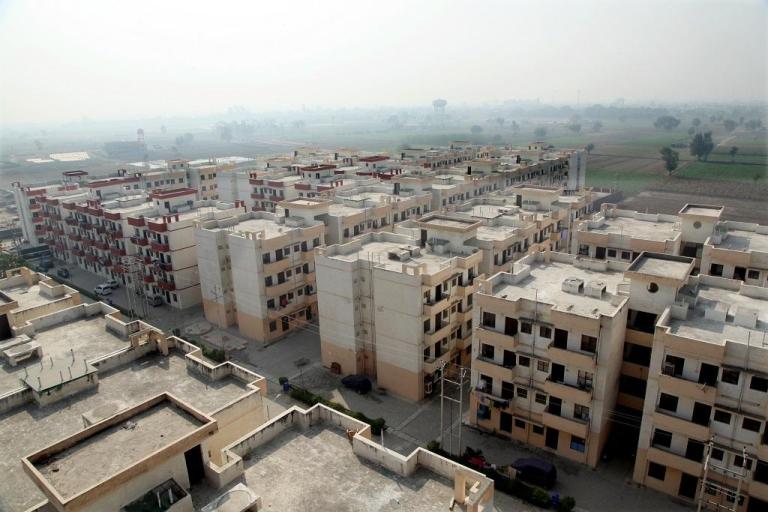
As I marveled (with mixed feelings – I am not such a sucker for the dramatic, my preferences are more for the under stated) in the sunny New York cold at the shiny surfaces and the form, the 1st thought that came to my mind was Chand Baori, a step-well that I had seen over 20 years back at Abhaneri in Dausa district, Rajasthan. I was a student undergoing professional training in Delhi and had gone on a step-well focused back-packing trip to Rajasthan.
The way I was doing this was to ask around whether people could direct me to a ‘kund’ or ‘baori’, I was in a super cheap dharamshala in Jaipur and somebody told me I could take a bus in the direction of Dausa and get off at a particular crossing and then walk to a step well. On the bus ride a helpful village soul took me under his wings and helped me get to Chand Baori. It took me completely by surprise, partly because I had no clue of what to expect and then on top of that, virtually nothing was visible beyond a featureless wall enclosure from the outside.
The masterpiece that it is, I ended up spending a good part of that early summer day in fairly harsh sunlight photographing the Escheresque geometry of the steps, shooting on precious B&W film, each frame was carefully thought of. It wasn’t very visited then and the small ASI set up seemed inadequately staffed. Even to my untrained student eye it was clear that a stepwell of such complexity could only have been the centre of a rich and highly developed urban settlement all of which seemed to have disappeared except for a temple. Locals told me that often when they dug for construction or even sometimes while ploughing their fields they found statues and other artefacts and ASI had disallowed any excavations in the village.
As late afternoon approached I decided to go back towards the highway looking for other leads to Baori’s and Kund’s. A tractor driver was kind to give me a lift, the nature of the roads combined with the vibrations of the tractor to shake me to the bone in the 30 odd minutes ride to the highway. A brief description on the ASI page on Chand Baori reads as follows, “Named after Raja Chanda, a Rajput ruler of 8th century A.D., this grand baori has imposing design and dimensions (about 19.5 m in depth). It has been provided with double flights of steps on each of its ten landings on the three sides. The fourth northern side consists of a multi-storeyed corridor supported on pillars and two projecting niche-shrines which have beautiful images of Mahishamardini and Ganesa. There is also a very small room known as Andheri Ujala. The baori is enclosed by a high wall having a gateway to the north. The enclosure is provided with verandah on all four sides.”
Cut to New York circa 2019, I am staring at the shiny structure, awkwardly called the ‘Vessel’, as sheer coincidence has it, I have reached there a couple of days after it’s inauguration (it opened March 15, 2019).
Posed as an interactive public sculpture that offers the public a one-mile vertical climbing experience and views, it rises from a more or less circular base of 50 feet diameter and via 2,500 individual steps in 154 interconnecting flights doubly loading its 80 landings clocks 150 feet height (it can also be accessed by an escalator). Designed by British Heatherwick Studio (who beat amongst others, celebrated Anish Kapoor), the Vessel is constructed of a structural steel frame covered by a shiny polished copper-colored cladding, it was fabricated at an Italian facility (Cimolai S.p.A., Monfalcone) and arrived in New York in six shipments travelling 15 days at sea, followed by a 5-hour barge trip upstream the Hudson River.
Built at a cost that exceeded $150 million (an equivalent to rebuilding 50,000 houses post earthquake in Nepal), the developer Stephan Ross who owns perhaps the most expensive real estate in the world went to extreme lengths in keeping the design a secret. However as the structure began to be assembled on site, word spread, followed by outrage, with New Yorker’s questioning the purpose and the design, some calling it a beehive, others calling it a doner kebab, and what I thought most appropriate, ‘a rib cage’.
However for now it seems like, ‘Vessel’ seems to have stuck, till some quirky New Yorkish name takes over. And I read up on the design inspirations and surprise surprise! It says the designer while conceiving the vessel was inspired amongst others by the Indian Step Well! And exercise.
Sure, ask how much exercise it must have been to negotiate the steps at Chand Baori to fetch life giving water, at the Vessel with the same amount of exercise one could fetch a selfie.







